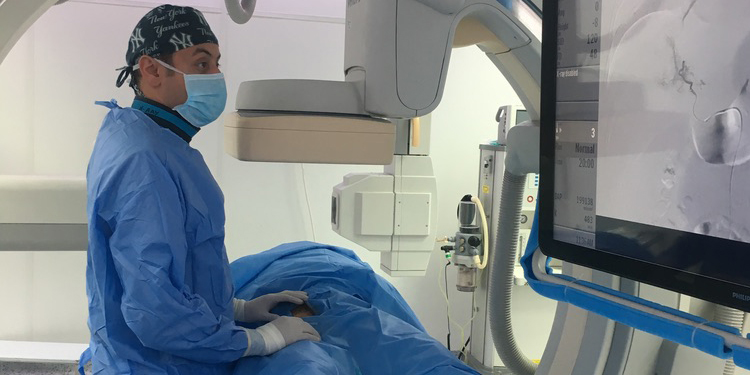
Prostatic Artery Embolization (PAE)
Benign prostatic hyperplasia (BPH) is a very common disease which reduces the quality of life for many men as the enlarged prostate ‘pinches’ the urethra and prevents complete emptying of the bladder, resulting in the need to pass urine very frequently, including during the night, disturbing sleep. The purpose of prostatic artery embolization (PAE) is to limit the symptoms of BPH by reducing the blood supply to the prostate gland, causing it to shrink.

How will the procedure benefit me?
PAE aims to reduce your symptoms to an absolute minimum. Your symptoms will resolve rapidly after treatment, the prostate gland will be preserved, and medications and surgery can be avoided. Erectile and sexual functions will not be impaired by PAE, and the treatment itself has a very low complication rate.

How should I prepare before the procedure?
Some medications should be stopped or reduced – you should discuss your medications with your doctor. You should fast for at least 6 hours before the procedure, though water can be taken with your normal medications. Before the intervention you will receive some antibiotics to prevent infection.

The Procedure
PAE is usually performed under local anesthesia, occasionally with mild sedation. Immediately before the PAE, a catheter (hollow tube) will be placed through your penis into your bladder.

What are the risks?
Bruising or bleeding can occur at the puncture site. Very rarely, further treatment (another vascular intervention or surgery) might be needed to fix complications at the puncture site. Possible complications related to the embolization include blood in the urine and/or urinary tract infection. The risk of infection is reduced by giving antibiotics prior to the procedure. Other, very rare complications might include blood in the sperm or faeces. Usually these adverse reactions disappear on their own.
What should I expect after the procedure?
What is the follow-up plan?
After a period of bed-rest and immobilization, you will be able to leave hospital either the same or the following day. Since PAE is a minimally invasive treatment performed through the skin, a small band-aid is all that is required on the skin nick. The catheter in the bladder will be removed on the day after the PAE at the latest, but possibly even on the day of the procedure.
You can expect effective, immediate relief from your symptoms. PAE does not require any dedicated follow up. However, since your prostate is preserved, you will need to follow your normal schedule for visits at the urologist.

